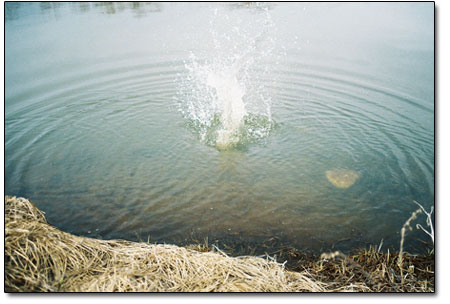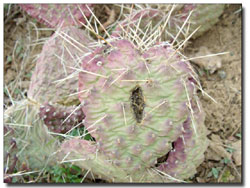|
| ||||
| Freedom of expression SideStory: Power through poetry
by Christine Rasmussen
The “Native Hip Hop Workshop” was the brainchild of Smart Moves coordinator for SUIT Boys and Girls Club Mari Villaluna. First offered last November and again this spring, with another one set for August, the workshops offer sessions on everything from film and music production to photography and poetry. The poetry centered on short “slam bios,” biographical poems meant to be read aloud in a minute or less, which were set to music and recorded to CD. “As I started observing the young people here, I noticed making music and writing was really important to them – so much that band class wasn’t enough,” said Villaluna, a two-year Ignacio resident originally from San Francisco. “They wanted to step it up and do music production or write a certain type of poetry that wasn’t a haiku; they wanted to do more of a poetry-slam style.” The workshop’s name was inspired by hip-hop music’s history as an alternative form of media used to talk about societal injustices. “But it’s also about looking through a native lens and thinking about hip-hop and these other contemporary venues,” explains Villaluna. “At one point we were all indigenous peoples, using oral storytelling. Without it, we will lose our stories as human beings." The first workshop last fall was packed, according to Villaluna, with more than 60 students, from kindergarteners through high school seniors. “We had young people who would probably never be a member of Boys and Girls Club come out and sign up for a membership so they could participate,” she said. In fact, it proved so popular that the Southern Ute Drum named the workshop a “Highlight of Community Happenings” in its 2009 review. The spring workshop in March, a day-long event held over spring break, saw a great turnout as well. In addition to writing slam bios during the workshop, the youth also practiced empathy exercises, in which they wrote about their worst crises. Villaluna used a small digital recorder to tape participants reading their work. “I wanted them to learn sampling and how to mix music with spoken word or poetry,” she said. The students created synthesized music on a Mac to accompany their work. “It was very basic, just cut and paste. We actually recorded all of the poems in a closet to get the best sound.” Since then, several participants have shared their work at various community events, the spoken-word mixes have been played on Southern Ute Tribal Radio, and several poems were published in the Southern Ute Drum and Poor Magazine, out of San Francisco.
It was Villaluna’s intent to have the youth’s work shared outside Boys and Girls Club circles, because just as important as expressing one’s feelings out loud or on paper is having others read or hear those words, she said. “Art is powerful, but when it’s not published, it can also get lost. I don’t want it to just stay hung up on the refrigerator; I want it to be in the tribal newspaper. I want to see it on someone’s blog.” Tanisha Collins, a Southern Ute and Ute Mountain Ute teen-ager, helped as a peer leader for the photography workshop last spring and also wrote a slam bio in the poetry workshop. It was her first time writing anything like that, and she said she was self-conscious in the beginning. “I didn’t want to (record the poem) because I don’t like the way I sound,” she admitted. Nevertheless, the slam had a profound effect. “When my mom listened to the CD, she started crying, because of the part where it said I struggle with making friends in school.” For 11-year-old Takoda Armstrong, of Pueblo and Caddo descent, the best part of the process was making the music mixes. “I learned how to use technology to make music, learned how to write, and had fun. When I heard the end product I was like, ‘Wow.’” Darrell Clah, mentor coordinator with the Boys and Girls Club, said many of the kids have never had exposure to such media outlets. However, Clah, who also taught the film production class last year, said such exposure often has a snowball effect. “They were excited when they saw the first film product we did, a quick little animation, then we took them to see other films at the Durango Independent Film Festival,” he said. “They all have something to express – they just don’t know how to do it. The main goal is to keep exposing them to new media.” For the upcoming workshop in August, Villaluna hopes to have a graffiti artist teach a class, so young people learn the difference between tagging and graffiti and the value of public art. The spring workshop was a huge community effort, with help from representatives from Tribal Support Services, the Ignacio Chamber and several local restaurants that donated food for the event, according to Villaluna. “It made me happy to see the community come together like that, especially because many did not understand what this would look like, but just trusted in the process because it’s what the youth wanted.” With future support, Villaluna hopes to open a music studio in the Boys and Girls Club and, eventually, a bigger media arts center, with rooms for publishing, digital artwork, film production and music making – something similar to the Youth Media Arts Center in Flagstaff, Ariz. Ultimately, the mission is to continue to offer venues for young people to speak their minds – to help them work through what Villaluna termed “some really hard-hitting” issues. “As a teen-ager, you go through a lot of things: parents’ divorce, abuse. For me, writing was my outlet,” she said. “Quite a few young people wrote about their battle with sobriety; a lot of elementary kids struggle with the fact that someone in their family smokes cigarettes. I don’t think as adults, we realize how much we impact young people, whether it’s in a good way or bad way.” • The photos "The Plunge," (top) and "Wounded Heart," were a collaborative effort between members of the Southern Ute Boys and Girls Club: Robert Rhodd, Alex Gearhart, Lorraine Watts, Lucas Monroe, Kiana Valdez & Trina Gearhart
|
In this week's issue...
- May 15, 2025
- End of the trail
Despite tariff pause, Colorado bike company can’t hang on through supply chain chaos
- May 8, 2025
- Shared pain
Dismal trend highlights need to cut usage in Upper Basin, too
- April 24, 2025
- A tale of two bills
Nuclear gets all the hype, but optimizing infrastructure will have bigger impact



 On the surface, hip hop music and Native American oral storytelling may not seem to have a lot in common. However, a unique venture of the Boys and Girls Club of the Southern Ute Indian Tribe has combined the two, offering kids exposure to modern media as well as a valuable outlet for expression.
On the surface, hip hop music and Native American oral storytelling may not seem to have a lot in common. However, a unique venture of the Boys and Girls Club of the Southern Ute Indian Tribe has combined the two, offering kids exposure to modern media as well as a valuable outlet for expression.